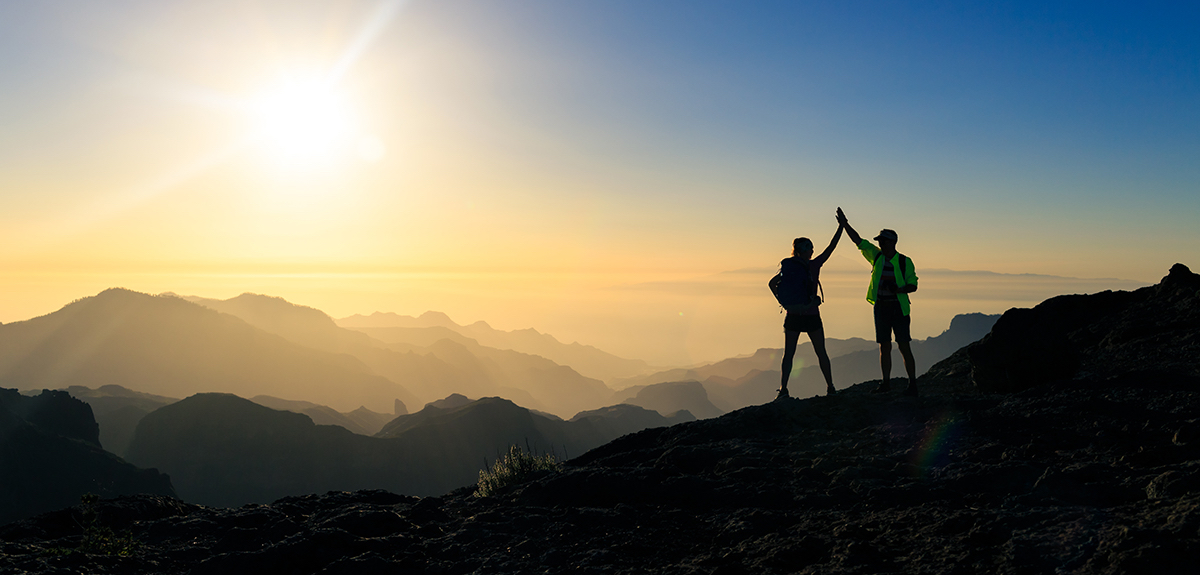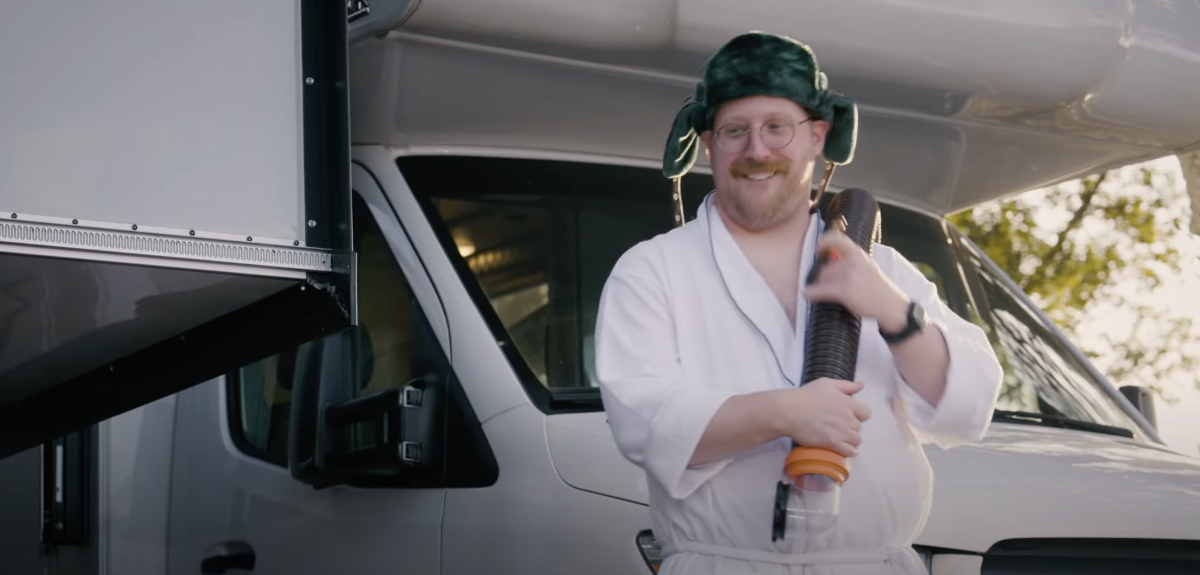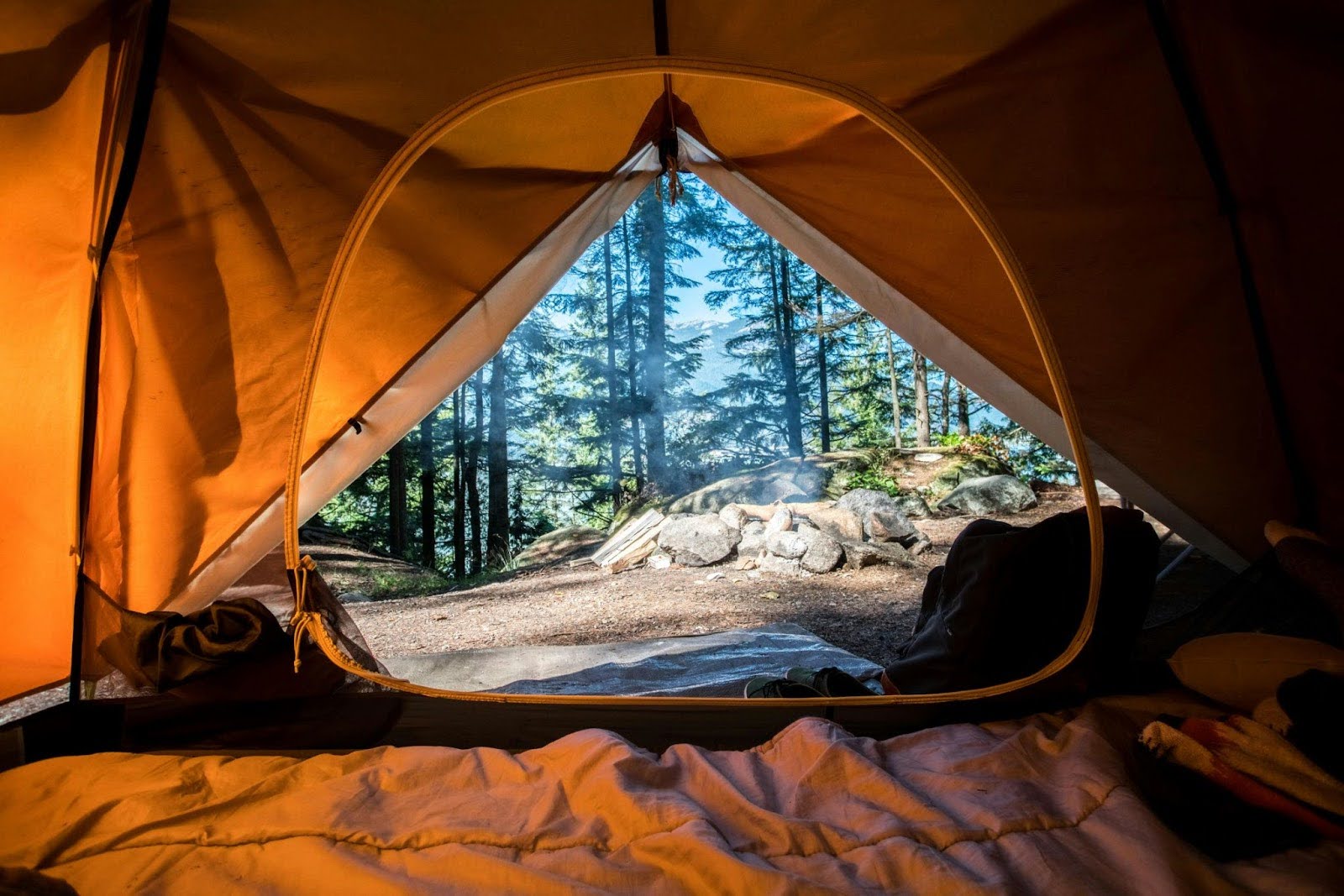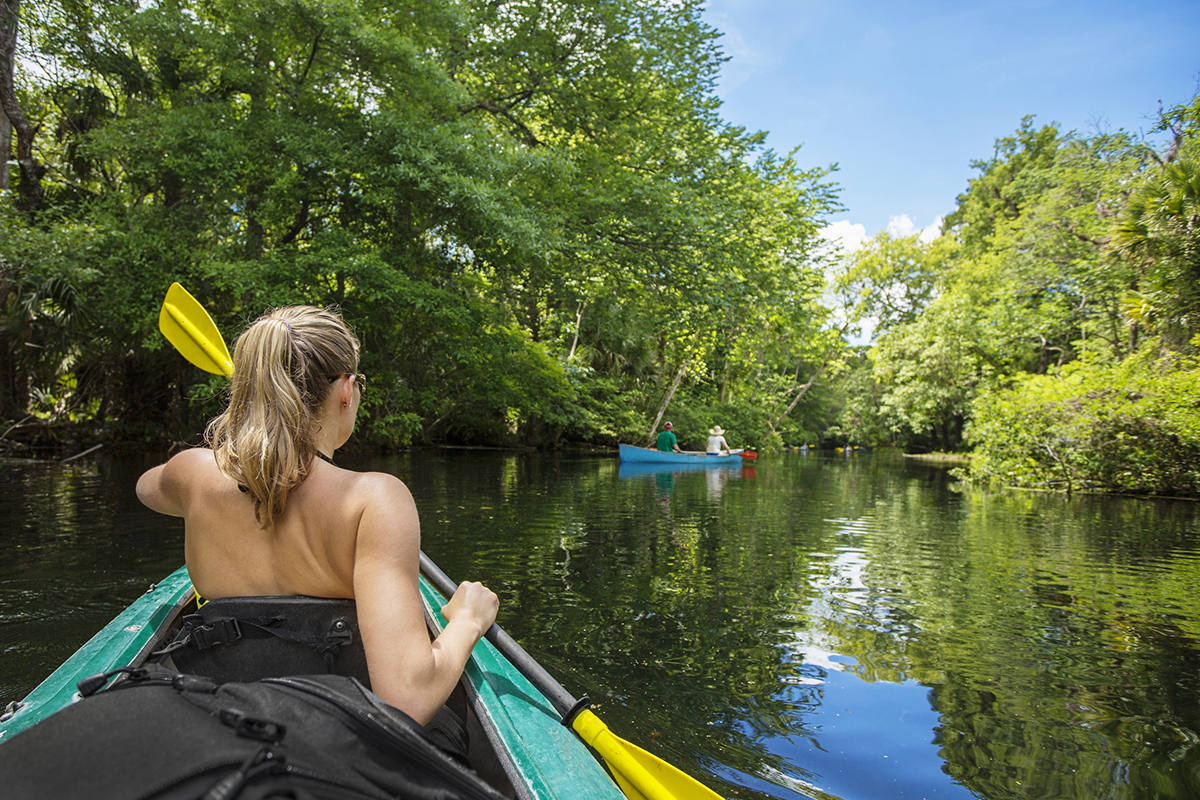A Guide to Camping on Public Lands
Image Caption:
Most RVers love America’s national and state parks. Few locations on earth can match the majestic beauty of these destination-worthy public lands but, unfortunately, the RVing opportunities within their boundaries are usually of the primitive variety. Plus, the majority of the campsites at these parks can only accommodate small- to medium-size motorhomes, meaning that if you want to stay at one of these campgrounds, you’ll need to make some adjustments to your RVing routine. And in spite of the fact that many of us have become accustomed to the seemingly never-ending amenities and conveniences afforded by privately owned campgrounds, all one needs to do is change their habits a small amount to make the occasional trip to a more primitive campsite possible.
We were tent campers for 25 years before we purchased our first motorhome. We enjoyed $10-$15 tent site prices in state and national parks and traveled without reservations, as we could usually find a primitive site with little trouble. Resort-style amenities would have been wasted on us, as our trips were often short and focused on hiking or sightseeing.
From Tent to Motorhome
The transition to our motorhome allowed us to take longer trips and travel during heat, cold, rain and even snow, but all of our electric gadgets and luxuries still needed power to perform their tasks. After a few stays in private campgrounds enjoying unlimited water and electricity, we decided we wanted to try to get back to our roots and return to camping in national and state parks. But could we really go back?
Partial Hook-Up Camping
Camping in public parks without amenities is not exactly boondocking, in the narrow definition of the term, as there is easy access to a bathhouse (often cold water only), water and a dump station, but we wondered if these limited amenities would be enough to keep us comfortable. After a few experimental trips, we are happy to report that it is, indeed, possible.
We discovered that we can camp without services for four to five days with almost no major adjustments to our routine, or up to seven days with a few more adjustments. To the right are some tips that we found to help manage the use of the tanks and power supply, without making any costly changes to the motorhome.
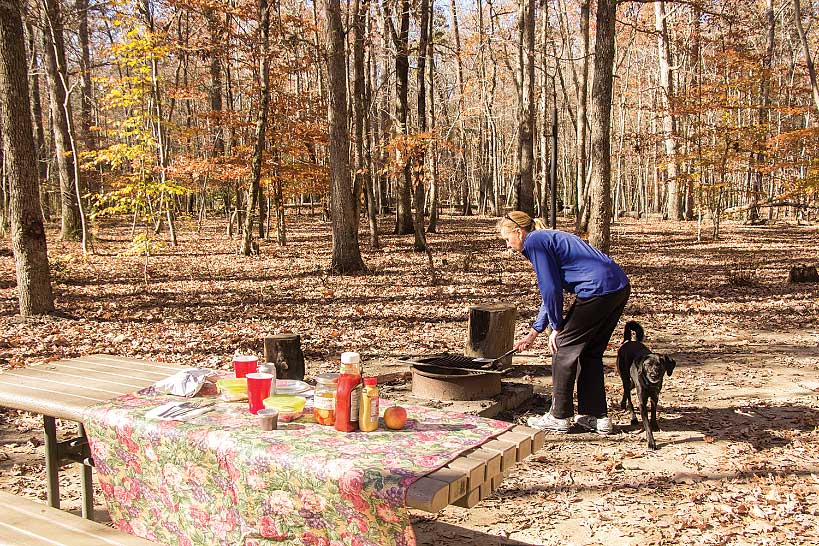
Grilling a simple meal for dinner requires only minimal cleanup.
TIPS FOR ‘ROUGHING’ IT
- Mentally prepare for “roughing it,” as there may be some trade-offs.
- Plan meals that use the grill and require minimal cleanup.
- Use paper plates and bowls — try to be thrifty and eco-conscious, and use as little as possible and use real silverware — it only requires a little bit of water to wash the day’s utensils.
- Wash dishes only once a day — heat a little water on the stove while you eat dinner and you won’t have to run your LP-gas water heater.
- Mix up your shower time. When in hot places and where cold water is all that is available, shower in the afternoon, when that cool shower will feel great! Alternatively, when it’s not so warm outside, consider a solar shower that you can use at the shower house, or use your LP-gas water heater and take a quick navy shower in your rig.
- Use that old coffee percolator you had from your tenting days or one of the varieties of other coffee mechanisms for the stovetop. Metal toasting racks are also available for LP-gas stovetops to keep breakfasts complete.
- Use hand wipes or wash up at the bathhouse. Hand-washing can use a lot of water.
- If you are really trying to conserve gray-water space, wash dishes in a basin that fits inside your sink and dump it in the bathhouse dish sink when finished.
- Use a pair of gallon water jugs for drinking and cooking water that you can fill at the bathhouse — keep them in rotation and fill them as needed when you are going to the bathhouse anyway.
- Run your generator once a day for an hour or two as needed — watch your battery levels! Plan strategically — use it in the afternoon, if air conditioning is needed or if you plan on using appliances or a blow dryer.
- Dump and fill less. Consider a midvacation trip to the dump station and water-fill area. It really only takes a little time and effort and you’ll be back to having fun in an hour at most.
Destinations for Camping on Public Land
Now that we’ve covered the basics, it’s time to hit the road. According to the National Park Service, the No. 1 park for RV camping in 2018 (the most current data available) was Yosemite, followed by Lake Mead National Recreation Area, Gulf Islands National Seashore, Great Smoky Mountains and Glacier National Park. Our favorite, Cape Hatteras National Seashore in North Carolina, ranked 22nd in 2018. We like to set up camp on Ocracoke Island in one of the national seashore’s four campgrounds. With its remote location (a free ferry trip is required) and its lack of amenities (no water or electric), sites are almost always available without a reservation (although reservations can be made at least three days in advance). The camping area is tucked behind the sand dunes and only 10 minutes from town. The ample beauty, along with nearby sightseeing, takes us back to our camping roots. Sites cost $28 a night.
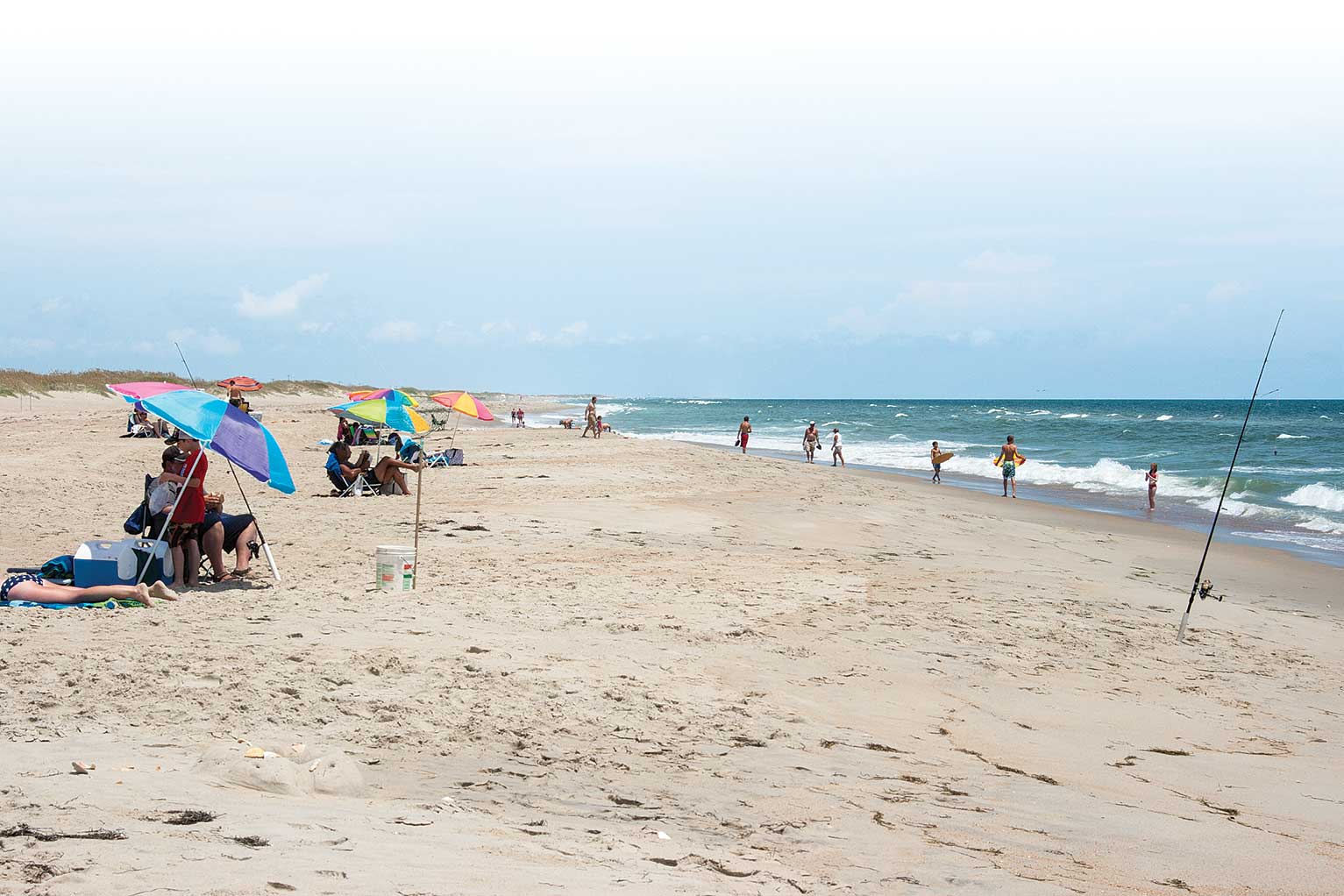
Surf fishing and relaxing on the beach are popular ways to spend the day on Ocracoke Island.
Camping at the beach is just one option in the national parks. Destinations include the sea, mountains, urban locations and forests. As you make your travel plans, consider the climate and temperatures from north to south. Every area has an ideal time when it’s not too hot or too cold. This is important if you plan on not using your generator for the majority of the time and want to stay comfortable.
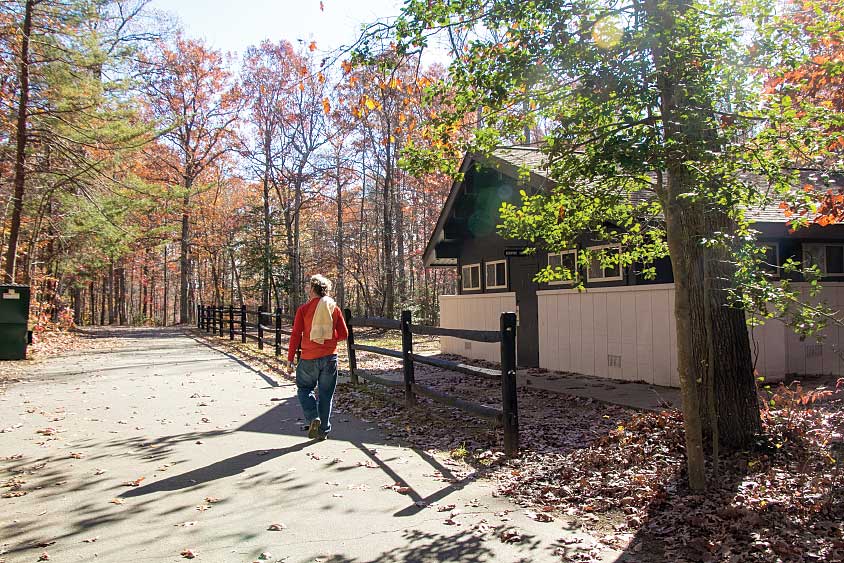
The author heads for the showerhouse in Prince William Forest Park to reduce gray-water usage.
Another one of our favorite parks is Prince William Forest Park in northern Virginia, 30 miles south of Washington, D.C. The park’s Oak Ridge Campground has 100 dry-camping sites. The campground is shaded, but try to time your visit so you avoid midsummer when the area can be very hot and humid. Two loops accept reservations and one loop is for walk-in stays. We have always been able to get a walk-in site at this location, but for holidays, reservations are recommended. A great day can be spent touring the famous monuments in Washington, D.C., cycling a portion or all of the 18-mile Mount Vernon Trail that follows along the Potomac River and leads to George Washington’s Mount Vernon Estate. And don’t forget the beautiful park where you’ve parked your motorhome, offering ample space for some down time. Enjoy the 37 miles of hiking trails, biking, ranger-led programs or peaceful nature after busy days of sightseeing. When a lot of time is spent away from the rig touring the local area, amenities are missed even less. Breakfast can be simple cereal or oatmeal on the stove and dinner can be on the grill.
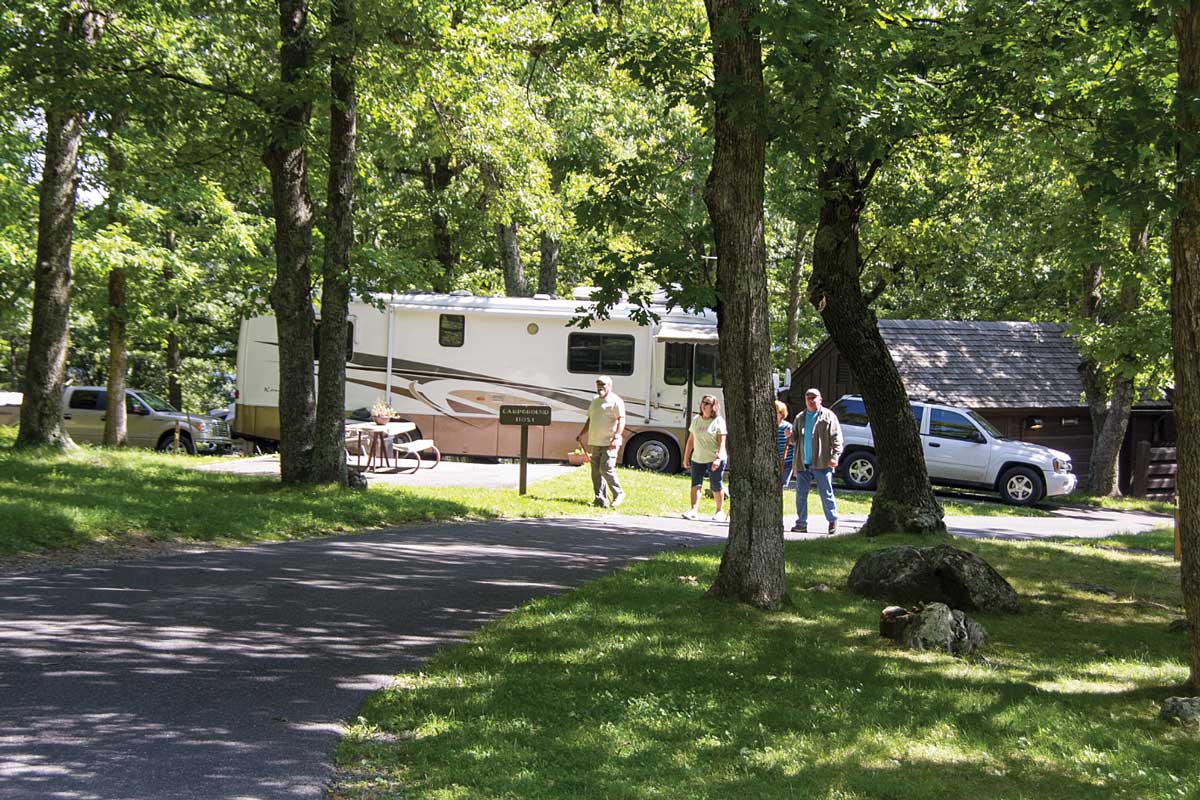
Big Meadow Campground in Shenandoah National Park doesn’t have hookups, but it does have pull-through and deep back-in sites that can accommodate a motorhome and dinghy vehicle.
Traveling in fall can be a real joy after a hot summer, and if mountains are what you crave, consider Shenandoah National Park during leaf-peeping season. Be sure to make reservations well in advance during this busy time of year. Temperatures will be cool, so again, plan ahead. Some extra clothing layers during the day will keep you comfortable and, with strategic generator use, a brief period of running the furnace and enjoying a movie can be enough to cast off the chill before bed. (Of course a warm campfire in the evening is the preferred method in such a beautiful setting, but be sure to run your generator in the morning to keep your batteries fully charged and maybe enjoy some coffee from your electric coffeemaker.) Four campgrounds are available in this park — Mathews Arm in the north, Big Meadows and Lewis Mountain in the central region, and Loft Mountain in the south. Hot showers can be enjoyed at Big Meadows Campground for a dollar, a relatively inexpensive convenience that will save some gray-water space. Hiking, ranger programs and exploration along Skyline Drive allow for your level of activity. Classic dining facilities provide relaxing meals in traditional lodges at Big Meadows and Skyland locations.
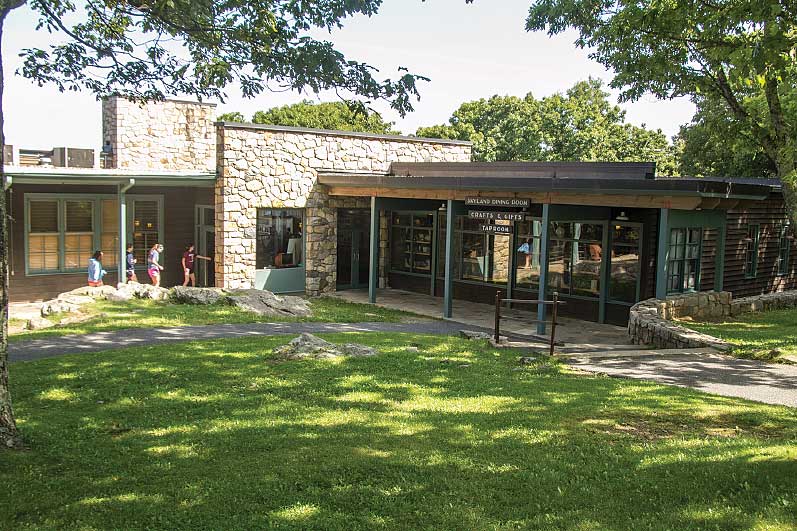
Skyland Resort, in Shenandoah National Park at mile 41.7, has a restaurant and gift store.
RVing in National Parks
Being an RVer in the national parks allows for the best of both worlds — enjoying nature and all it has to offer — but also the benefit of moving inside when nature is offering a bit too much, like too many bugs, too much heat or too much rain.
Try following these three basic guidelines:
- Consider climate (both hot and cold) when selecting travel dates
- Plan ahead for easy food prep and cleanup
- Keep your utilities in mind, daily.
After returning to our roots for some enjoyable primitive-camping adventures, we think the trade-off for the occasional stay in public sites at some of America’s most beautiful locations is well worth a little planning and a few trips to the showerhouse.

